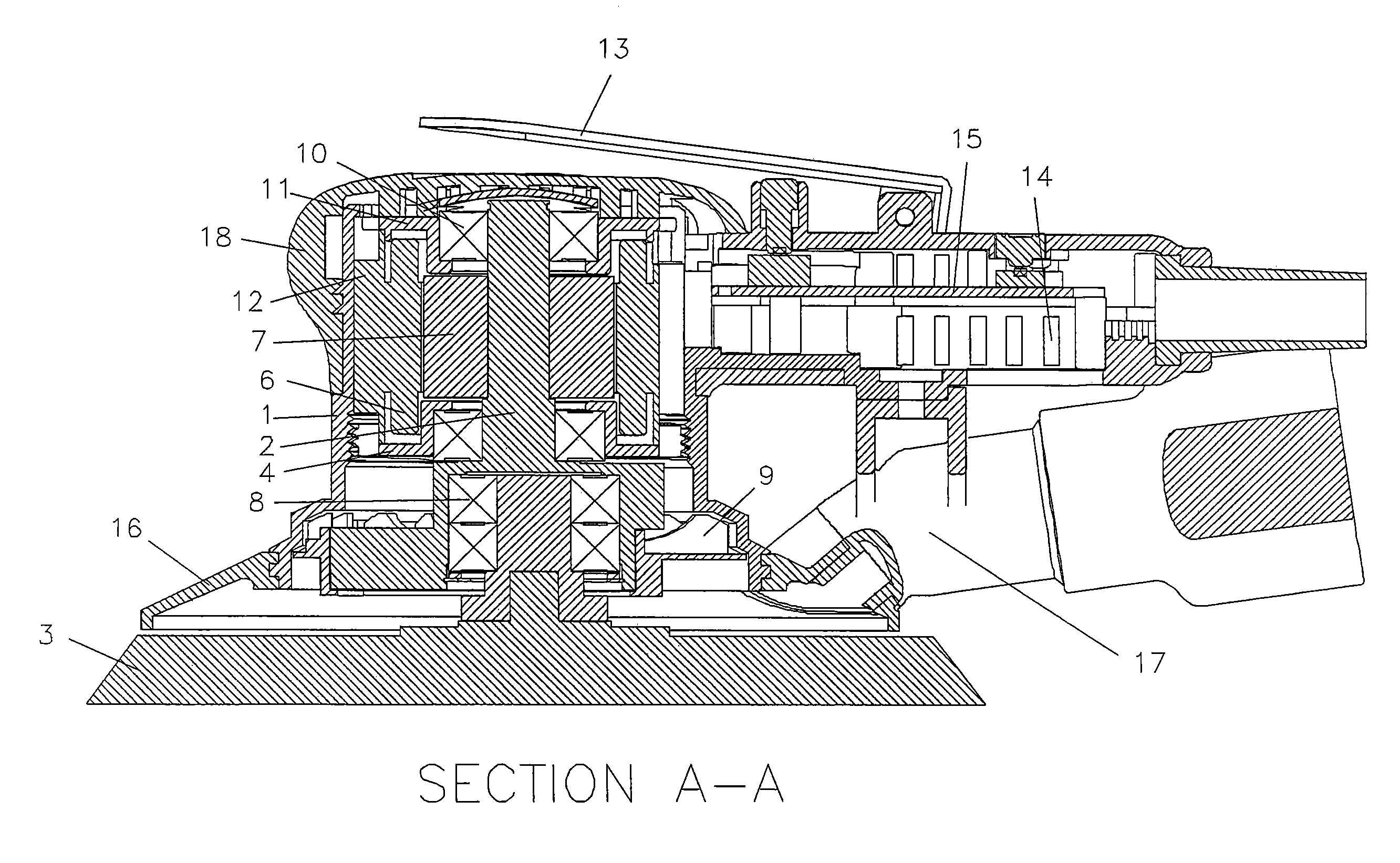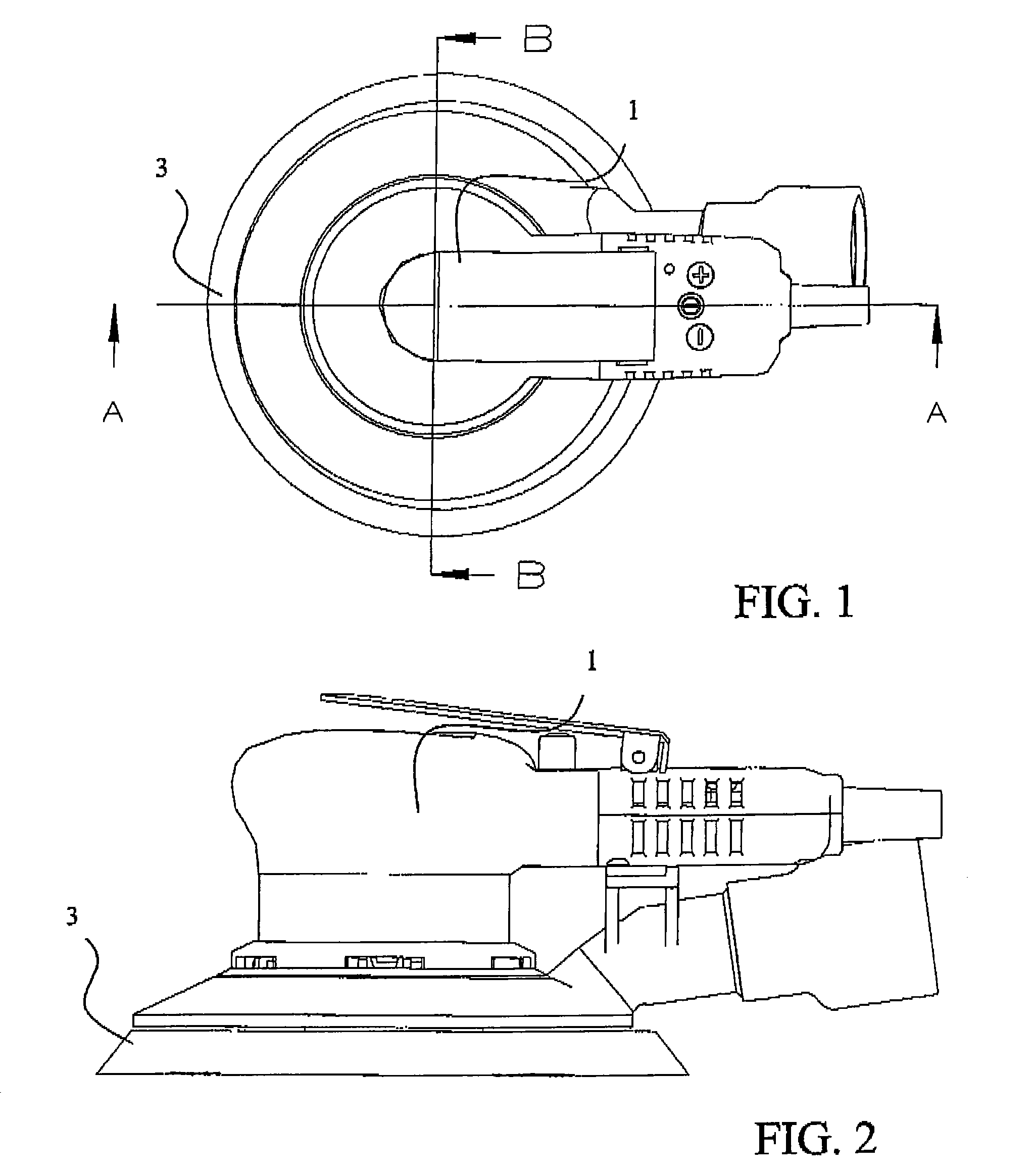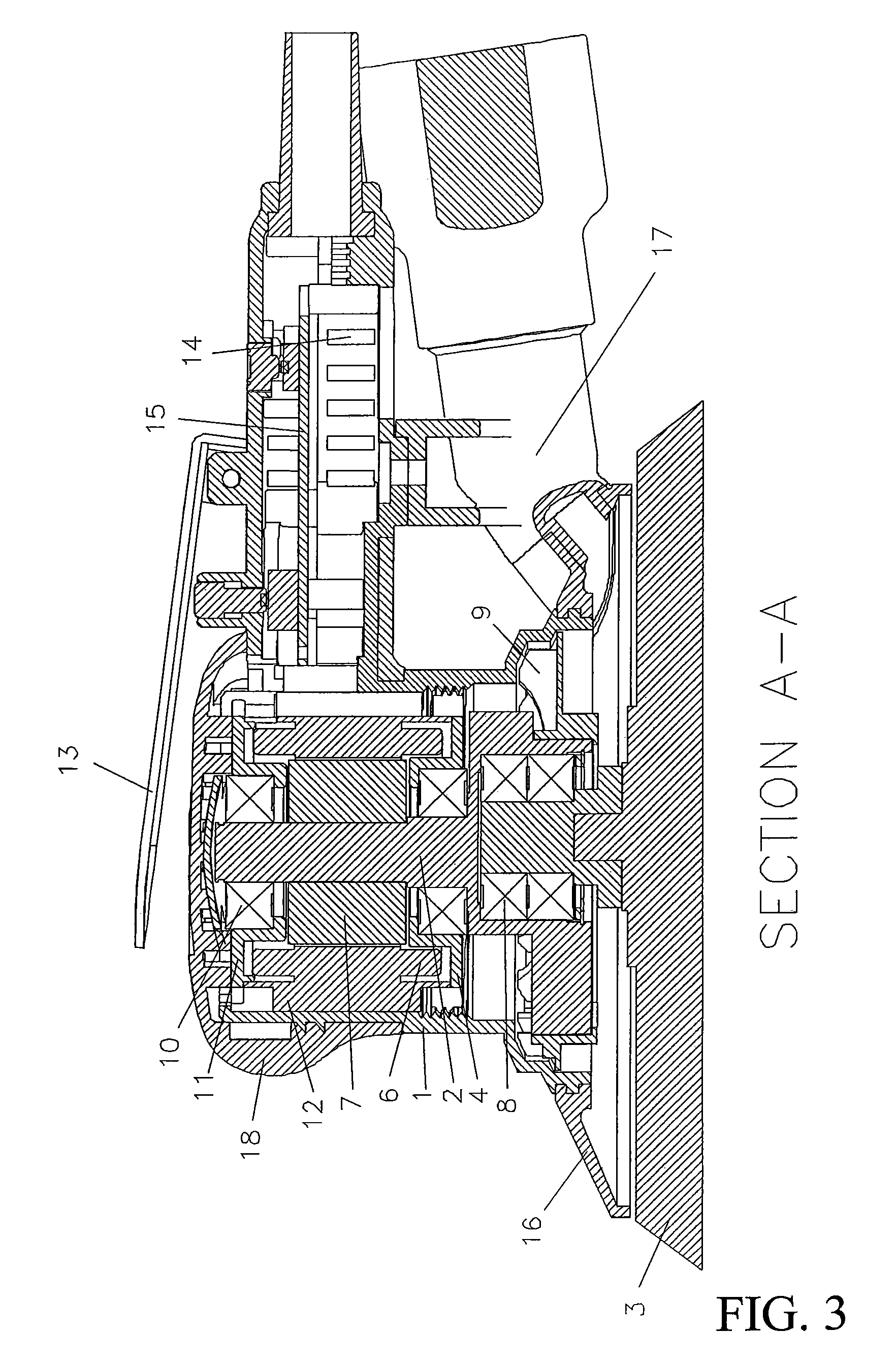Compact electric sanding machine
a compact, electric technology, applied in the direction of grinding machines, electrical equipment, synchronous motor starters, etc., can solve the problems of disadvantageous hermetic motors, difficult to be gripped with one hand, and unavoidable large motor diameters
- Summary
- Abstract
- Description
- Claims
- Application Information
AI Technical Summary
Benefits of technology
Problems solved by technology
Method used
Image
Examples
Embodiment Construction
[0023]The sanding machine shown in FIGS. 1 to 4 is formed of a housing 1 enclosing all parts of the motor. The motor is formed of a stator 6, including a casing with cooling fins 12 and a rotor 7. These parts are integrated with the parts keeping a tool shaft 2, a bearing housing at both ends 4, 11 and a bearing 10 in place, in such a way that the rotor 7 is fastened to the tool shaft 2. The casing and cooling fins of the stator 6 are shaped in such a way that an air slot is generated which is limited by the casing, the housing of the sanding machine and the cooling fins. The grinding disc 3 is fastened freely rotationally to the tool shaft 2 via an eccentric bearing 8. The blower 9, which is fastened to the tool shaft 2 preferably at the same height as the balance weights, sucks in air through the hole 14. The air cools the control unit 15 and then the motor via the cooling fins 12. The air is blown out through the hole 5. The shroud 16 collects the grinding dust that is sucked out...
PUM
 Login to View More
Login to View More Abstract
Description
Claims
Application Information
 Login to View More
Login to View More - R&D
- Intellectual Property
- Life Sciences
- Materials
- Tech Scout
- Unparalleled Data Quality
- Higher Quality Content
- 60% Fewer Hallucinations
Browse by: Latest US Patents, China's latest patents, Technical Efficacy Thesaurus, Application Domain, Technology Topic, Popular Technical Reports.
© 2025 PatSnap. All rights reserved.Legal|Privacy policy|Modern Slavery Act Transparency Statement|Sitemap|About US| Contact US: help@patsnap.com



